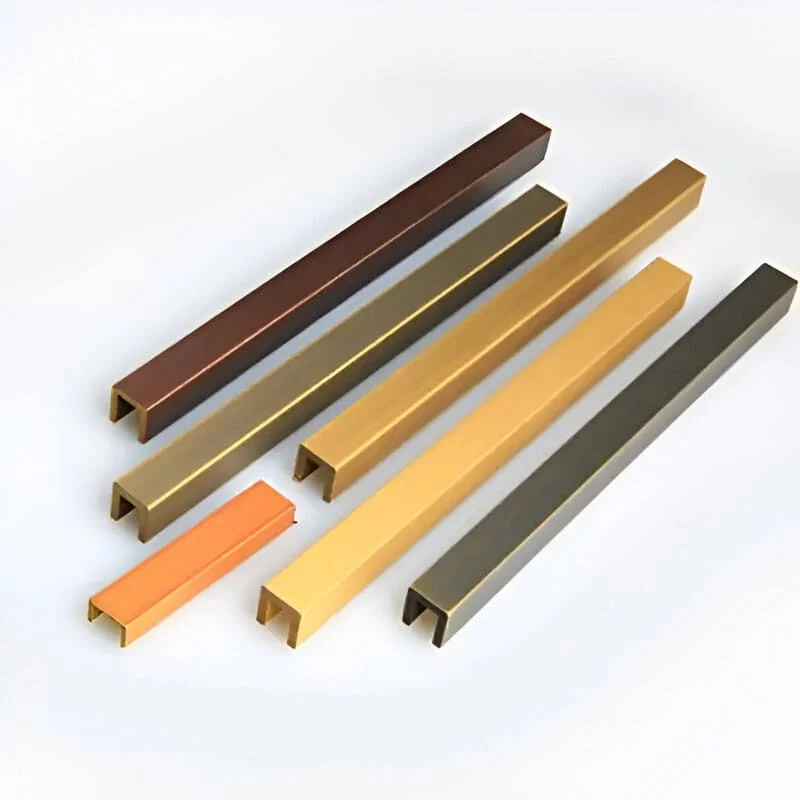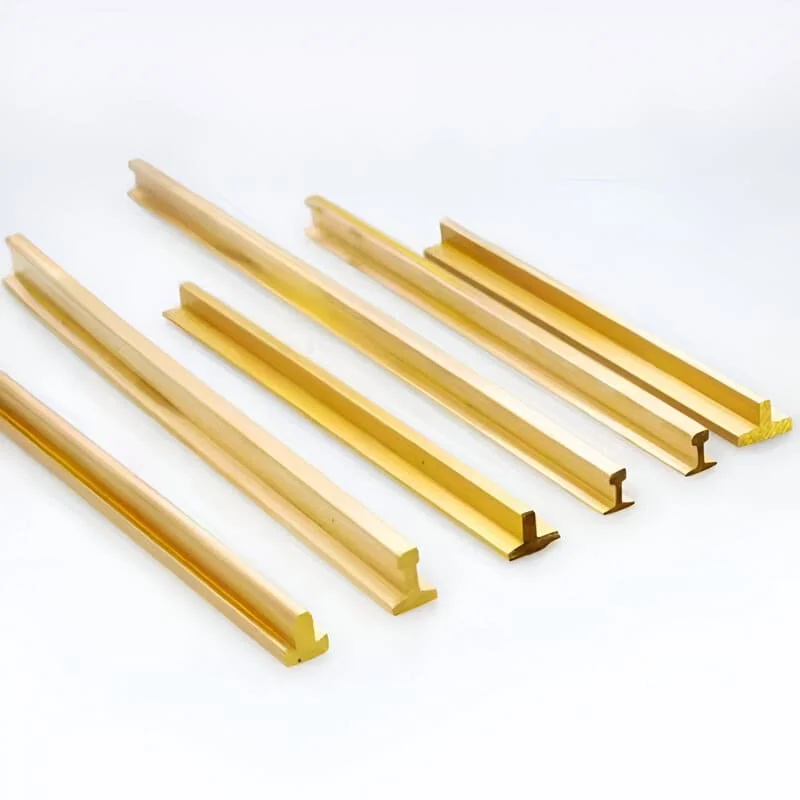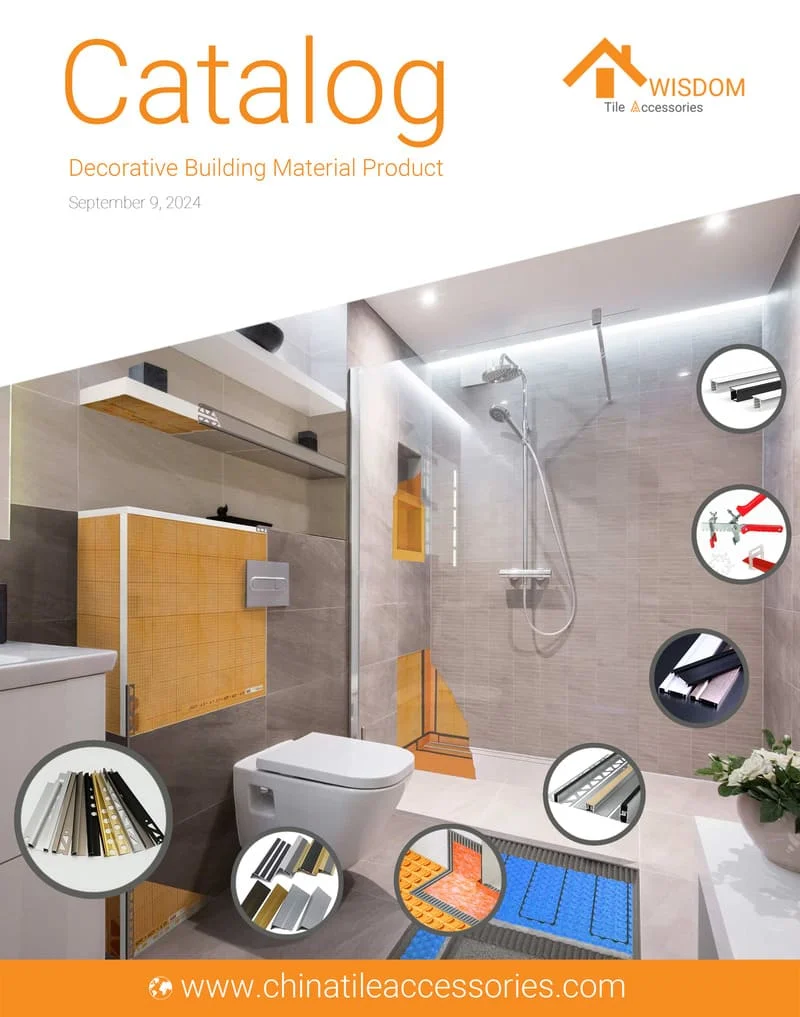Copper and copper alloys, including brass, bronze, and nickel silver, are widely recognized for their diverse applications and unique properties in industries ranging from electronics to construction. This article provides an in-depth exploration of these materials, examining their compositions, physical characteristics, and practical uses.
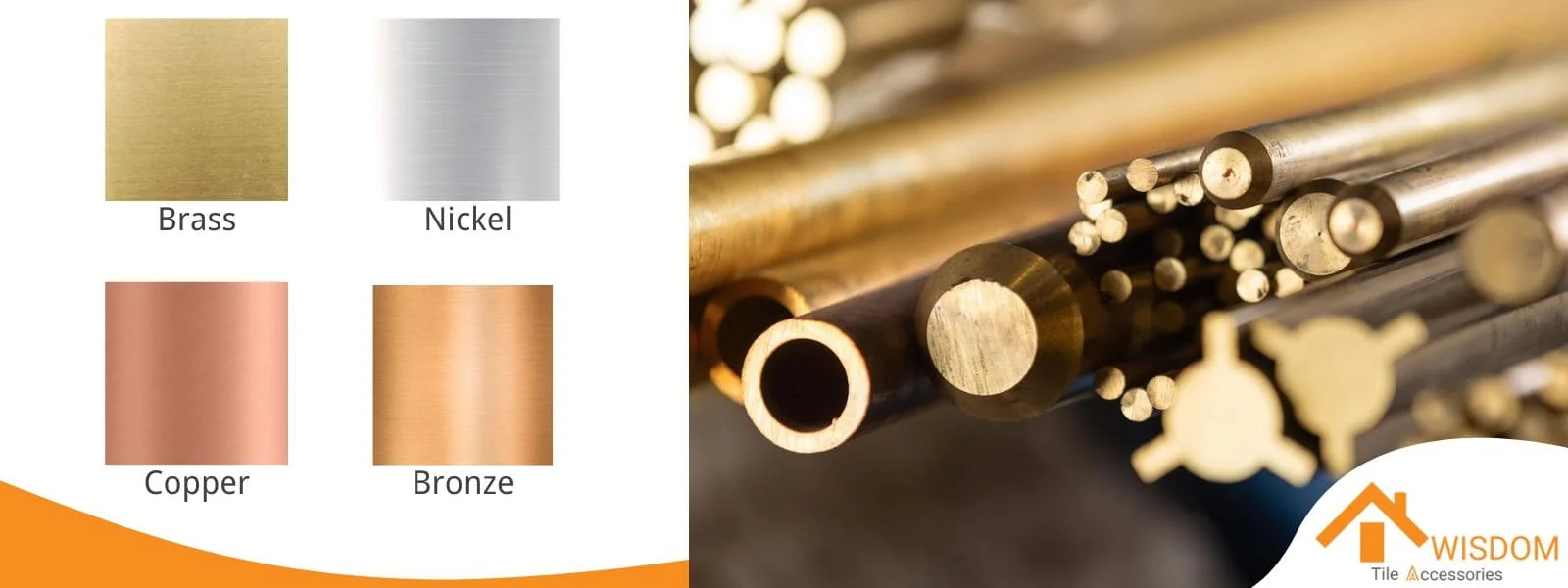
1. Characteristics of Copper and Copper Alloys
1.1 Properties of Copper and Copper Alloys
- Excellent Conductivity: Conductivity is second only to silver (Ag).
- Non-Magnetic Metal: Very low susceptibility to magnetization, used in compasses, radar, and other environments sensitive to magnetic fields.
- Low Friction Coefficient: Exhibits good wear resistance, high elastic limit, and fatigue limit, especially in multi-component tin (Sn) containing copper alloys used in wear-resistant parts, bushings, bearings, turbines, etc.
- High Electrode Potential (+0.34V): Higher than hydrogen, exhibits good corrosion resistance.
- Face-Centered Cubic Lattice: No allotropes, high plasticity, easy to process.
- Releases Copper Ions in Aqueous Media: Cu ions inhibit the growth of bacteria and aquatic life, thus used in drinking water pipes, washing machine drums, and ship propellers.
- Vibrant Color: Pure copper is purplish-red; alloying can produce golden-yellow or white hues.
Table 1: Comparison of Physical Properties
Alloy Type | Conductivity (S/m) | Density (g/cm³) | Melting Point (°C) |
|---|---|---|---|
Pure Copper | High | Medium | High |
Brass (e.g., H70) | Medium-High | Medium | Medium |
Bronze (e.g., Tin Bronze) | Medium | Medium-High | Medium |
Nickel Silver | Medium-High | Medium | High |
1.2 Impurity Elements
- Industrial pure copper commonly contains small amounts of lead (Pb), bismuth (Bi), silver (Ag), cadmium (Cd), iron (Fe), titanium (Ti), selenium (Se), tellurium (Te), oxygen (O), sulfur (S), phosphorus (P), and zirconium (Zr).
- Titanium, phosphorus, and iron significantly reduce the conductivity and thermal conductivity of copper.
- Oxygen, sulfur, selenium, and tellurium decrease the plasticity of copper.
- Certain amounts of sulfur, lead, and tellurium enhance the machinability of copper but are detrimental to welding.
- Oxygen causes embrittlement and susceptibility to hydrogen embrittlement.
1.3 Role of Alloying Elements
1.3.1 Formation of Copper Base Solid Solutions
- Nickel (Ni), aluminum (Al), tin (Sn), zinc (Zn), and manganese (Mn) are the most effective solid solution strengtheners in copper alloys.
- Phosphorus, silicon, iron, cobalt (Co), beryllium (Be), aluminum, and manganese significantly reduce the electrical conductivity of copper; silver (Ag), cadmium, and chromium (Cr) have minimal impact on conductivity.
- Solvent elements substantially decrease the thermal conductivity of copper.
1.3.2 Formation of Intermetallic Compounds
- Exhibits age-hardening properties.
Table 2: Alloy Composition and Applications
Alloy Type | Composition (e.g., Cu-Zn %) | Applications |
|---|---|---|
Pure Copper | 99% Cu | Electrical components, conductors |
Brass (H70) | 70% Cu, 30% Zn | Cartridge cases, plumbing fittings |
Tin Bronze | Cu-Sn alloy | Bearings, gears, marine fittings |
Nickel Silver | Cu-Ni alloy | Cutlery, musical instruments, jewelry |
2. Classification of Copper and Copper Alloys
- Pure copper is also known as red copper, while copper alloys are classified into brass, bronze, and nickel silver.
2.1 Brass
- Standard Brass (Binary Brass)
- Special Brass (Multi-component Brass)
2.2 Bronze
- Tin Bronze
- Aluminum Bronze
- Beryllium Bronze
- Silicon Bronze
- Lead Bronze
2.3 Nickel Silver
- Standard Nickel Silver
- Special Nickel Silver
Table 3: Corrosion Resistance
Alloy Type | Freshwater Corrosion Resistance | Seawater Corrosion Resistance | Industrial Atmospheres |
|---|---|---|---|
Pure Copper | Good | Poor | Good |
Brass (H70) | Good | Moderate | Moderate |
Tin Bronze | Excellent | Excellent | Good |
Nickel Silver | Excellent | Excellent | Excellent |
3. Pure Copper

- Also known as red copper, purity exceeds 99%, categorized into ordinary pure copper, deoxidized copper, oxygen-free copper, and special copper. Features excellent conductivity, thermal conductivity, non-magnetic properties, and good corrosion resistance in air and fresh water but poorer in seawater.
3.1 Categories
- Ordinary Pure Copper: High oxygen content, not suitable for heating in reductive environments to avoid hydrogen embrittlement; mainly used in electrical and thermal components.
- Deoxidized Copper: Retains certain deoxidizers (phosphorus, manganese), significantly reduces the conductivity of copper, suitable only as structural material.
- Oxygen-Free Copper: Extremely low oxygen and impurity content, mainly used in vacuum electronic devices.
- Special Copper: Contains trace specific elements like arsenic (As), silver, tellurium, and dispersed copper, mainly used in electrical structural components.
3.2 Properties
- Impurity elements reduce the electrical and thermal conductivity of pure copper.
- Lead and bismuth increase thermal brittleness, prone to cracking during thermal processing; adding calcium (Ca), cerium (Ce), and zirconium (Zr) forms refractory compounds to mitigate effects; sulfur and oxygen increase brittleness during cold working.
- Susceptible to hydrogen disease (caused by oxygen).
- Oxygen's impact: causes hydrogen embrittlement and cold brittleness.
3.3 Grades
- Designated with 'T', grades 1-4 for red copper, T1, T2, T3, T4, with increasing number indicating reduced purity. Copper with an oxygen content below 0.01% is termed oxygen-free copper, denoted as TU1, TU2.
Table 4: Mechanical Properties
| Alloy Type | Tensile Strength (MPa) | Hardness (HB) | Ductility (%) |
|---|---|---|---|
Pure Copper | Medium | Soft | High |
Brass (H70) | Medium-High | Medium-High | Medium |
Tin Bronze | High | High | Medium-High |
Nickel Silver | Medium-High | Medium | High |
4. Brass

- Divided into standard brass (binary brass) and special brass (multi-component brass).
4.1 Standard Brass
- Cu-Zn Binary Alloy. Designated as H+Cu%, e.g., H68 denotes a copper-zinc alloy containing 68% copper.
- Characteristics: Good corrosion resistance, the higher the zinc content, the cheaper it is, up to 46%; higher zinc content increases susceptibility to stress corrosion cracking, adding silicon and arsenic reduces this risk.
- Typical Brass and Uses:
- Cartridge Brass (H70): Used for making cartridge cases, also known as cartridge brass.
- 21 Brass: Contains about 65% copper, used for making brass stair nosing, copper strips, plates, tubes, brass tile trim, springs, etc.
- 64 Brass: Contains about 60% copper, used for manufacturing heating pipes, copper plates, wires, rods, etc.
Table 5: Applications and Industry Uses
| Alloy Type | Primary Applications |
|---|---|
Pure Copper | Electrical wiring, roofing |
Brass (H70) | Plumbing, musical instruments |
Tin Bronze | Bearings, marine hardware |
Nickel Silver | Cutlery, decorative items |
5. Bronze

- Includes tin bronze, aluminum bronze, beryllium bronze, phosphor bronze, silicon bronze, etc.
5.1 Grades
- Denoted by Q+ symbol of the main added element and its mass fraction + other elements' mass fraction. For example, QSn4-3 indicates a tin bronze containing 4% tin and 3% zinc.
5.2 Tin Bronze
- Contains 3-14% tin; the higher the tin content, the greater the alloy's strength and hardness. Tin is expensive.
- Casting Properties: Minimal volume shrinkage.
- Mechanical Properties: Suitable for cold working with tin content <6%; suitable for hot working with tin 6-7%; suitable for casting alloys with tin 10-14%.
- Corrosion Resistance: Better than red copper and brass.
- Multi-component Tin Bronze: Addition of zinc, phosphorus, lead, nickel, etc. Phosphorus effectively enhances the alloy's mechanical properties, especially the elastic limit and fatigue limit, suitable for springs; zinc improves casting flow and density; lead improves machinability and wear resistance; zirconium, boron, vanadium, titanium refine the grain.
- Commonly Used Tin Bronzes: QSn4-3, QSn6.5-0.4, ZCuSn10Pb1, etc., used for manufacturing elastic components, wear-resistant parts, anti-magnetic and corrosion-resistant parts, such as springs, bearings, gears, turbines, washers, etc.
- Mechanical Tin Bronze: Commonly known as gunmetal, contains 10% tin, used to make gears, valves, propellers, and other corrosion and wear-resistant devices.
- Bearing Tin Bronze: Contains 12-15% tin, used for railway vehicle axles and other low-speed heavy load bearings.
- Coinage Tin Bronze: Contains 4-10% tin, good ductility, excellent casting properties.
- Bell Tin Bronze: Contains 20-32% tin, the fewer the impurities, the clearer and more melodious the sound.
- Bronze Statuary: Copper statuettes and home decor bronzes, Cu 80-90%, Sn 2-8%, Zn 1-12%, Pb 1-3%, zinc enhances solution flow, cast surfaces have clear patterns.
- Mirror Copper: 2/3 Cu, 1/3 Sn, ancient mirrors were made from copper. Adding small amounts of nickel and arsenic can produce scientific instruments.
5.3 Aluminum Bronze
- Contains less than 11.5% aluminum. Aluminum is cheaper, replacing some tin bronzes.
- Casting Properties: Good flow, high volume shrinkage, prone to cracking due to aluminum oxide inclusions.
- Mechanical Properties: Impact produces no sparks. Increasing aluminum content improves strength and hardness but reduces plasticity.
Aluminum 5-8% is suitable for cold and hot working; aluminum 8-11% has poor flow, used as casting alloy.
- Corrosion Resistance: Forms a dense oxide layer on the surface, providing better corrosion resistance than tin bronze.
- Multi-component Aluminum Bronze: Addition of iron, nickel, manganese, etc. Iron refines the grain, avoiding spontaneous temper brittleness; manganese enhances strength, avoiding temper brittleness; nickel improves heat resistance and corrosion resistance.
5.4 Beryllium Bronze
- Beryllium is more expensive than silver.
- Characteristics: High strength and hardness, high fatigue limit and elastic limit; corrosion-resistant, wear-resistant, cold-resistant, non-alkaline, good conductivity and thermal conductivity; impact produces no sparks. Commonly used for high-grade precision elastic components and special wear-resistant components in mines, refineries, and other spark-free environments.
- *Bery
llium Bronze Commonly Adds Nickel 0.2-0.5%**: Practically, it forms a Cu-Be-Ni ternary alloy, a small amount of nickel improves elasticity, strength, wear and corrosion resistance.
- Iron, cobalt, nickel, magnesium enhance age hardening, refine the grain; strict control of impurity elements phosphorus, lead.
- Corrosion and Wear Resistance: QBe2, QBe1, suitable for fresh and seawater, used to make springs, wear-resistant bearings, explosion-proof tools, etc.
6. Nickel Silver
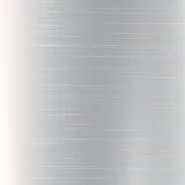
- Copper alloy primarily containing nickel. Classified chemically into standard and special nickel silver. Standard nickel silver contains only copper and nickel. Special nickel silver, based on standard, adds zinc, manganese, aluminum, iron, lead, etc., known as zinc nickel silver, manganese nickel silver, aluminum nickel silver, iron nickel silver, lead nickel silver, etc.
6.1 Cu-Ni Alloy
- Contains 3-30% nickel, high strength and high corrosion resistance, used for high-pressure, low-temperature structural materials.
6.2 Special Nickel Silver
- Enhances age-hardening strength. Aluminum nickel silver, excellent high-temperature performance, suitable for internal combustion engine high-temperature parts; silicon nickel silver, good elongation and conductivity, suitable for high-strength span transmission lines, electric tram overhead lines, etc.; zinc nickel silver, good heat, corrosion, fatigue resistance, small temperature coefficient of resistance, used for making springs or thermoelectric materials.
6.3 Structural Nickel Silver
- Includes standard nickel silver, iron nickel silver, zinc nickel silver, aluminum nickel silver, characterized by good corrosion resistance, machinability. Used to make condensers, heat exchangers, medical devices, corrosion-resistant parts, artworks, etc.
6.4 Electrical Nickel Silver
- Includes standard nickel silver, manganese nickel silver, characterized by high electrical resistance, high thermoelectric potential, low temperature coefficient of resistance, used for compensation wires, thermocouples, resistance instruments, and heaters.


